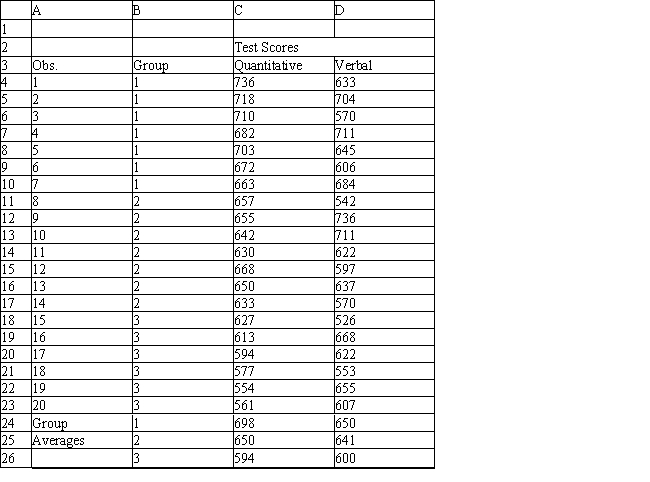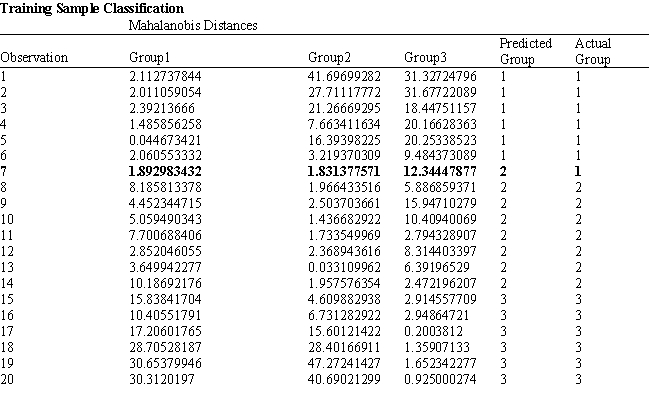Exhibit 10.2
The following questions are based on the problem description and the output below.
A college admissions officer wants to evaluate graduate school applicants based on their GMAT scores, verbal and quantitative. Students are classified as either successful (Group 1) , marginally successful (Group 2) or not-successful (Group 3) in their graduate studies. The officer has data on 20 current students, 7 successful (Group 1) , 6 marginally successful (Group 2) and 7 not successful (Group 3) . 




-Refer to Exhibit 10.2. Based on the analysis presented in the spreadsheet, what percentage of the observations were correctly classified?
Definitions:
Emerging Adulthood
A phase of life between adolescence and full-fledged adulthood, marked by exploration, instability, and self-focus, typically occurring from late teens to mid-twenties.
Revolving Door
A term often used to describe a system where individuals move back and forth between positions in public and private sectors, potentially leading to conflicts of interest.
Emerging Adult
Refers to individuals, typically aged 18 to 25, who are transitioning from adolescence to adulthood and experiencing related changes in identity and self-concept.
Immune System
The complex network of cells, tissues, and organs in the body that works together to defend against infection, disease, and foreign substances.
Q3: How many constraints are there in a
Q5: Draw the network representation of this
Q7: The amount of time a customer spends
Q14: A technique that analyzes past behavior of
Q16: A company wants to locate a new
Q18: The term serves which of the
Q18: Any integer variable in an ILP that
Q25: The term Late Finish refers to the
Q49: Refer to Exhibit 7.1. If the company
Q76: Refer to Exhibit 11.11. What are